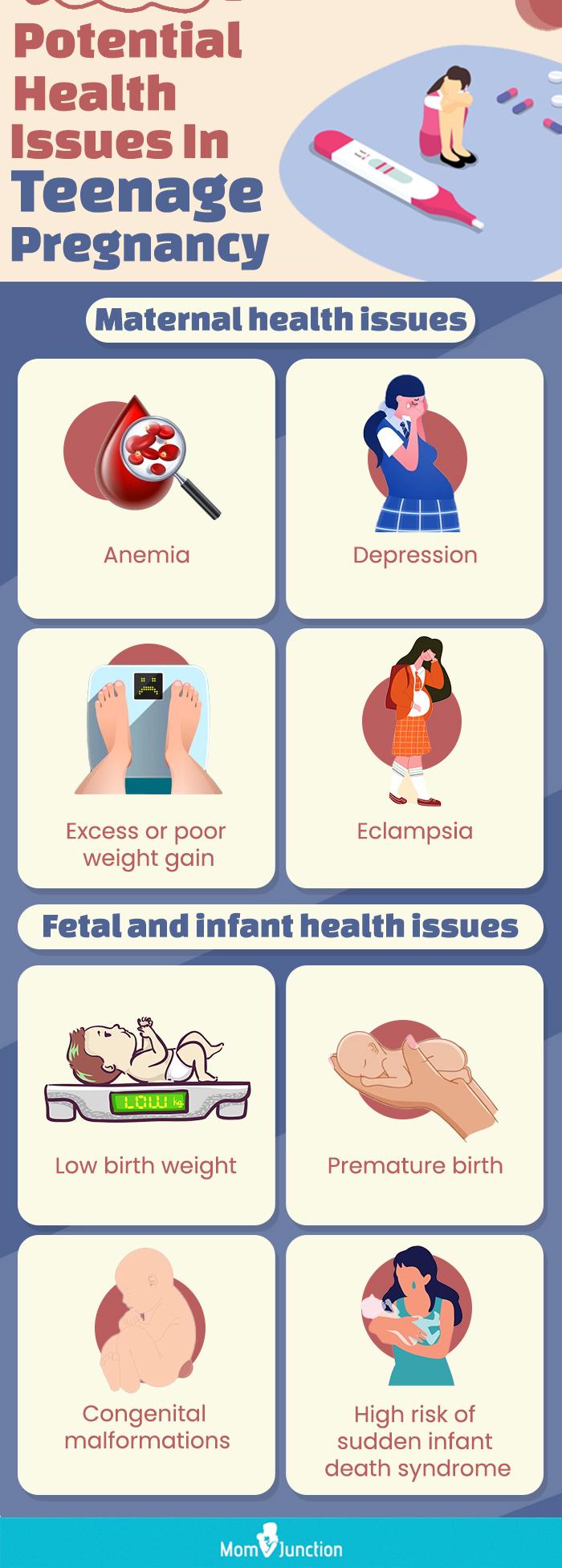
Teenage Pregnancy: A Comprehensive Examination of Risks and Consequences
Teenage pregnancy, defined as pregnancy occurring in a female under the age of 20, poses significant risks and consequences for both the young mother and her child. This complex issue is influenced by a myriad of factors, including socioeconomic status, access to education and healthcare, and societal norms. Understanding the risks associated with teenage pregnancy is crucial for developing effective prevention and support strategies.
Health Risks for the Mother
- Preeclampsia and Eclampsia: These serious conditions involve high blood pressure and can lead to seizures, organ damage, and even death.
- Gestational Diabetes: This type of diabetes develops during pregnancy and can increase the risk of premature birth and other complications.
- Anemia: Iron deficiency during pregnancy can lead to fatigue, shortness of breath, and increased risk of infection.
- Premature Birth: Babies born to teenage mothers are more likely to be premature, which can result in a range of health problems.
- Low Birth Weight: Babies born to teenage mothers often have low birth weight, which can increase the risk of developmental delays and other health issues.
- Increased Risk of Sexually Transmitted Infections (STIs): Teenage mothers are more likely to have multiple sexual partners, increasing their risk of contracting STIs, including HIV.
Health Risks for the Child
- Prematurity and Low Birth Weight: As mentioned above, babies born to teenage mothers are more likely to be premature and have low birth weight.
- Developmental Delays: Children born to teenage mothers may experience developmental delays in areas such as language, motor skills, and cognitive function.
- Increased Risk of Chronic Diseases: Children born to teenage mothers have an increased risk of developing chronic diseases, such as asthma, obesity, and cardiovascular disease.
- Increased Risk of Behavioral Problems: Children born to teenage mothers are more likely to engage in risky behaviors, such as smoking, drug use, and early sexual activity.
Social and Economic Consequences
- Limited Education and Employment Opportunities: Teenage mothers often face significant barriers to completing their education and securing stable employment, which can lead to poverty and social isolation.
- Increased Risk of Child Abuse and Neglect: Children born to teenage mothers are more likely to experience child abuse and neglect.
- Strain on Families and Communities: Teenage pregnancy can place a significant strain on families and communities, both financially and emotionally.
- Increased Risk of Intergenerational Poverty: Teenage mothers are more likely to come from low-income families, and their children are more likely to experience poverty as well.
Contributing Factors
- Socioeconomic Status: Poverty, lack of access to education and healthcare, and limited opportunities contribute to the high rates of teenage pregnancy in certain populations.
- Lack of Education and Knowledge: Teenagers who lack comprehensive sex education and access to contraception are more likely to engage in risky sexual behaviors.
- Peer Pressure and Social Norms: In some communities, teenage pregnancy is seen as a norm, which can influence adolescents’ decision-making.
- Mental Health Issues: Teenage mothers are more likely to have experienced trauma, depression, or anxiety, which can increase their risk of pregnancy.
- Family Dynamics: Unstable family environments, lack of parental support, and early exposure to sexual abuse can all contribute to teenage pregnancy.
Prevention and Support Strategies
- Comprehensive Sex Education: Providing teenagers with accurate and age-appropriate information about sexual health and reproduction is essential for preventing teenage pregnancy.
- Access to Contraception: Ensuring that teenagers have access to a range of contraceptive methods, including condoms, birth control pills, and intrauterine devices (IUDs), is crucial for reducing unintended pregnancy.
- Parental Involvement: Parents play a vital role in supporting their teenagers and providing guidance on sexual health and decision-making.
- Community-Based Programs: Community-based programs that provide support, counseling, and resources to teenage mothers and their families can help to improve outcomes.
- Economic Empowerment: Addressing the underlying socioeconomic factors that contribute to teenage pregnancy, such as poverty and lack of education, is essential for long-term prevention.
Conclusion
Teenage pregnancy is a complex issue with far-reaching consequences for both the young mother and her child. Understanding the risks associated with teenage pregnancy is crucial for developing effective prevention and support strategies. By addressing the contributing factors, providing comprehensive sex education, ensuring access to contraception, and supporting teenage mothers and their families, we can work towards reducing the incidence of teenage pregnancy and improving the lives of young people.